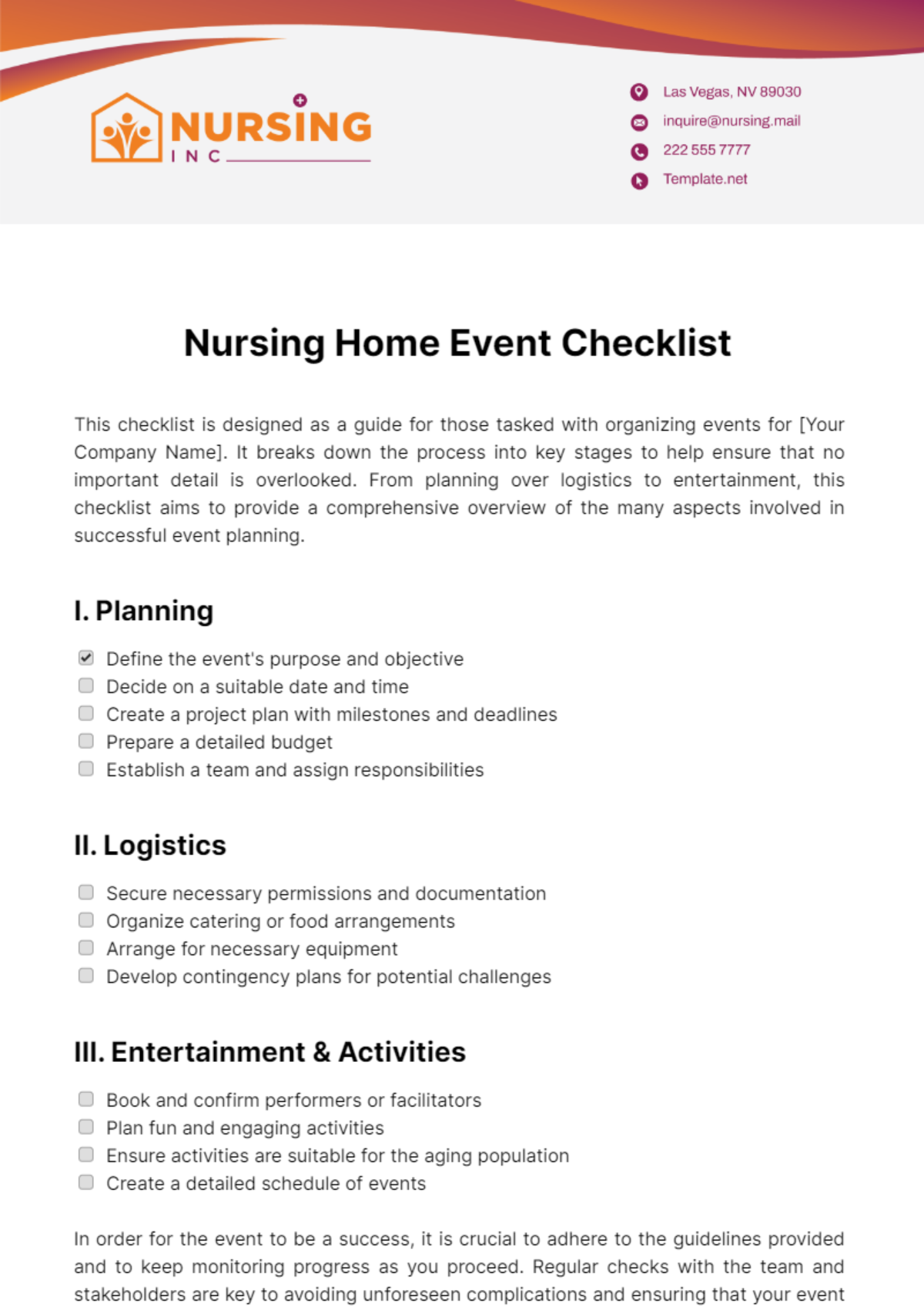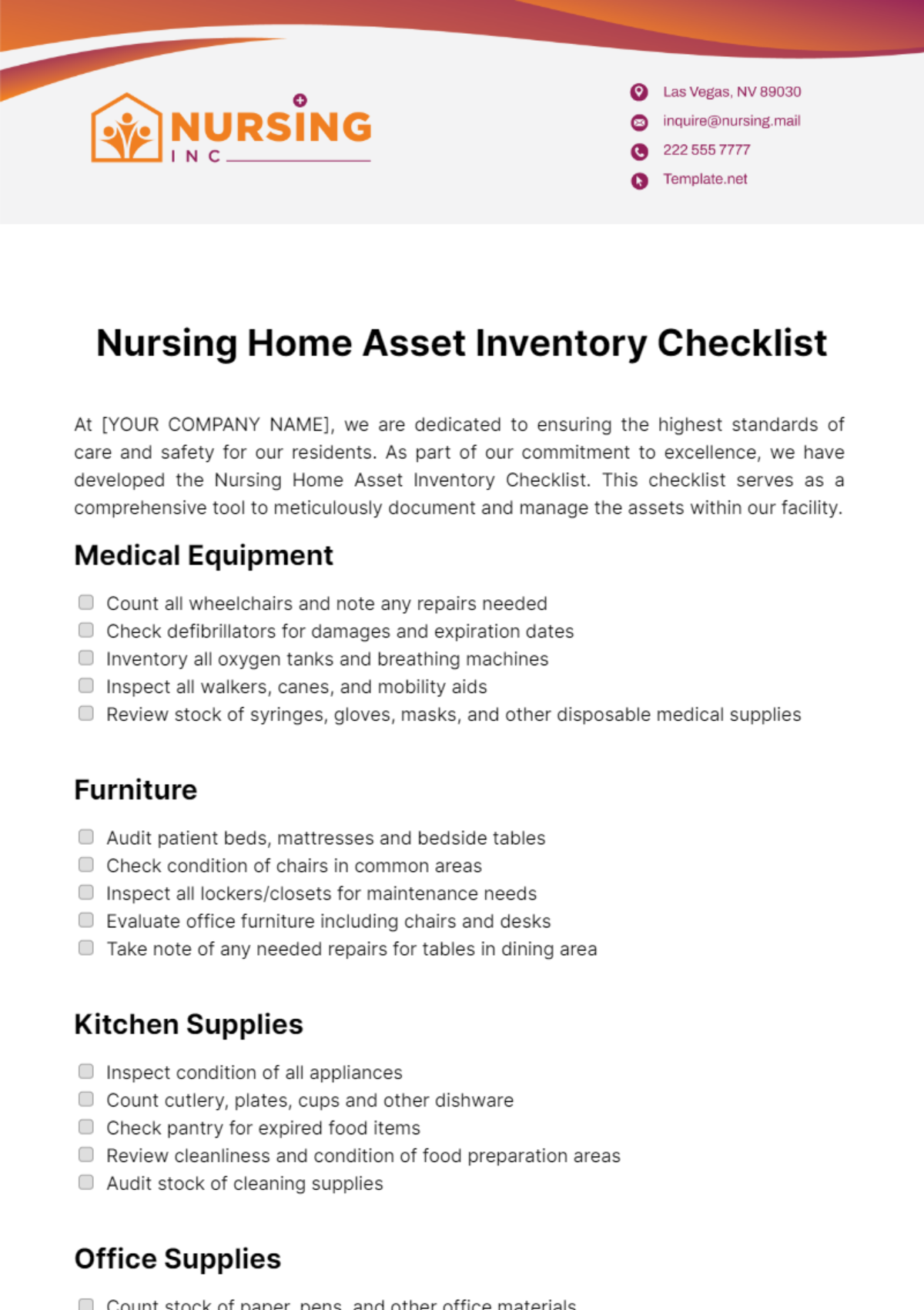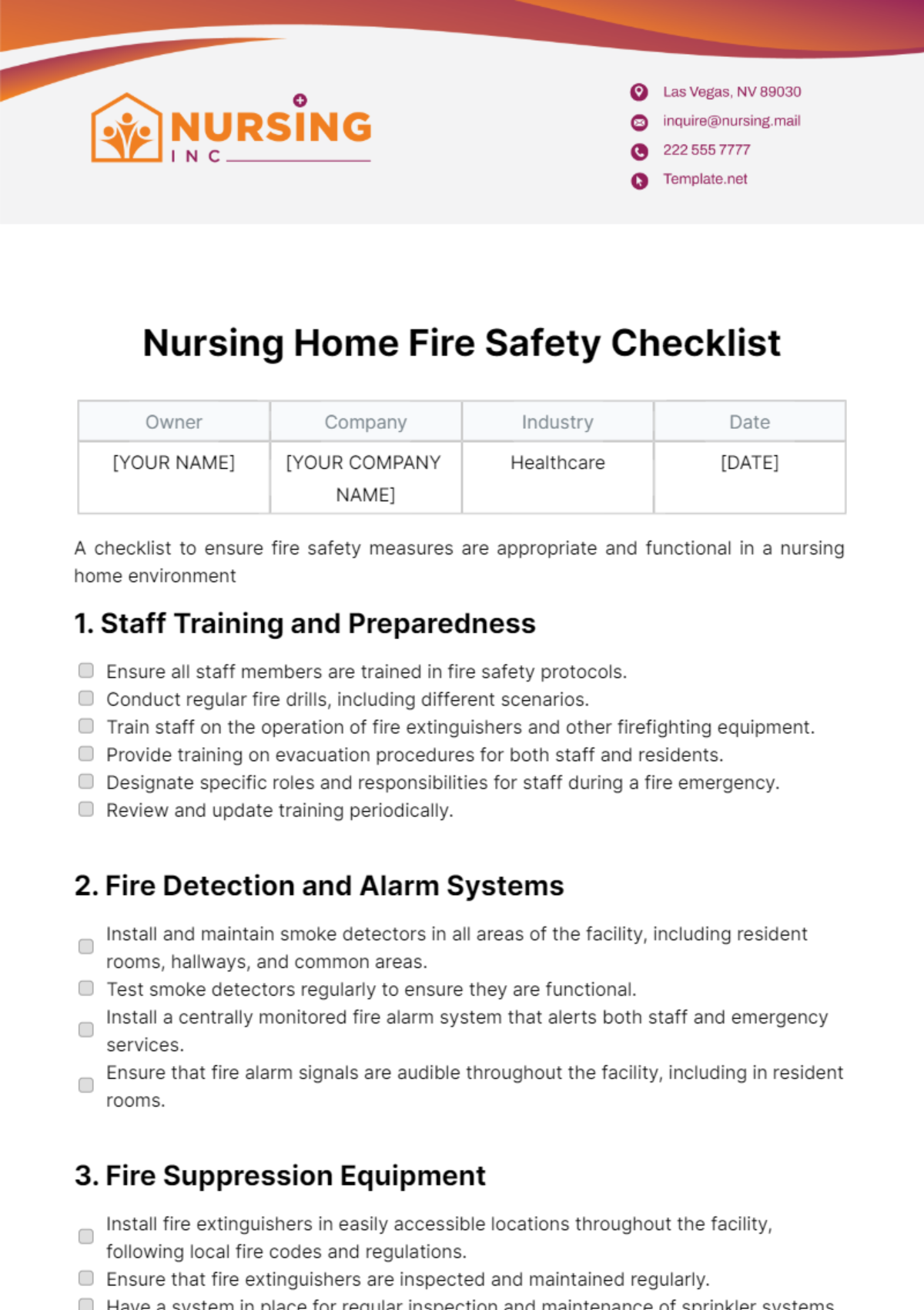Nursing Home Communication Checklist
This checklist is designed to ensure effective and compassionate communication within our nursing home, covering interactions among staff, residents, and their families. Please use this as a guideline to promote transparency, empathy, and responsiveness in all communications.
Staff Communication
|
|
|
|
|
Resident Communication
|
|
|
|
|
Family Communication
|
|
|
|
|
Emergency Communication
|
|
|
|
|

















































